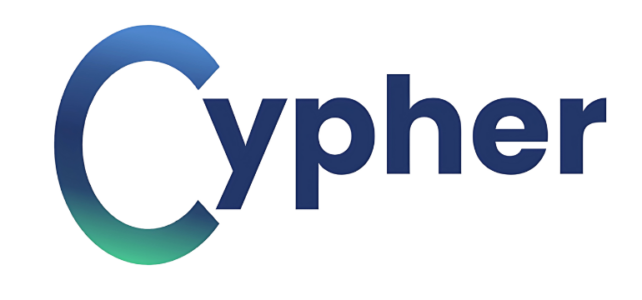Picture your business as a bustling river, with funds flowing in and out just like water. Managing this flow effectively—keeping a steady rhythm and avoiding dry spells—is the essence of cash flow management. It’s about monitoring every financial ripple, making strategic decisions to ensure you’ve got ample cash to cover expenses, and harnessing surpluses to power your business growth.
In this blog post, we will dive into five savvy cash flow management tactics, proven to help your organization thrive and stride confidently towards enduring financial success.

Forecasting Cash Flow
Forecasting cash flow is like having a financial compass that guides your business towards stability and growth. It’s the art of understanding the inflows and outflows of money within a specific timeframe, allowing you to make well-informed decisions to keep your cash flow in check.
Think of it as having a keen financial intuition. By analyzing various factors, such as sales, expenses, and investment prospects, you become adept at foreseeing potential cash shortages or surpluses. This foresight empowers you to take proactive measures and ensure your business always has a healthy financial position.
By staying on top of your cash flow and precisely anticipating it, you can make better-educated decisions regarding your company’s future. This can help you prevent financial troubles and guarantee that you always have enough cash on hand to cover expenditures and invest in prospects for growth.
Managing Accounts Receivable and Payable
This is another crucial component of cash flow management. Accounts receivable refers to money consumers owe you, whereas accounts payable refers to money owed to suppliers and vendors.
Accounts receivable management acts as a guardian of your hard-earned revenue. It involves meticulous tracking and collection of outstanding payments from customers. You ensure a steady cash inflow by issuing timely invoices and proactively following up with those who have yet to settle their debts. Encouraging prompt payments through incentives like early payment discounts and implementing effective strategies to discourage late payments can further strengthen your cash flow. Additionally, analyzing credit conditions and setting appropriate credit limits help minimize the risk of bad debt, safeguarding your financial stability.
Conversely, accounts payable management is a commitment to honor your financial obligations to suppliers and vendors. Timely payment of bills becomes a cornerstone of building and maintaining trust-based relationships. By managing your accounts payable effectively, negotiating favorable terms, and optimizing cash flow, you not only meet your obligations but also cultivate a reputation for reliability and cooperation.
Controlling Inventory
Managing your inventory is another important aspect of cash flow management. Having too much
inventory on hand can tie up funds and restrict liquidity, but having too little inventory can result in lost sales and disgruntled consumers.
To effectively manage your inventory, you must carefully track inventory levels and use data to make educated purchasing and stocking decisions. Consider installing an inventory management system to optimize your inventory levels and lower your carrying expenses.
It’s also critical to assess your product mix and determine which products are the most profitable. You may limit the risk of slow-moving inventory and maximize your return on investment by focusing on your best-selling and most profitable products.

Reducing Operating Expenses
Maintaining adequate cash reserves is also part of effective cash flow management. Cash reserves can help you weather unexpected financial difficulties or capitalize on unanticipated development possibilities. Preferably, you should have three to six months’ worth of operational expenses in cash reserves.
You may need to cut costs, boost sales, or seek outside investment to develop your cash reserves.
Consider taking cost-cutting initiatives such as lowering overhead expenses or renegotiating supplier contracts. Consider also looking at additional revenue streams, such as increasing your product range or targeting new client segments.
You should also explore pursuing outside capital, such as a small company loan or line of credit, to supplement your financial reserves. Yet, it’s critical to consider the terms and hazards of any financing choices thoroughly.
Using Financing Wisely
To effectively manage cash flow, creating a cash flow forecast and plan is essential. You can anticipate and address any potential cash flow difficulties by projecting your future cash flow and planning accordingly.
Start by determining your expected cash inflows and outflows for the upcoming period. Analyze sales forecasts, accounts receivable and payable, inventory management, and scheduled expenses or investments. This clearly shows your anticipated cash flow and highlights any potential deficits or surpluses.
Once you have your cash flow projection, establish a cash flow plan. Identify areas where you can reduce costs or increase revenue and develop strategies to address these challenges. It’s also important to have a contingency plan in place to handle unexpected cash flow issues.
By creating a cash flow forecast and plan, you gain better control over your finances, allowing you to make informed decisions and navigate potential cash flow obstacles with confidence.
Takeaways
Mastering the art of cash flow management is vital for the success of any organization. By implementing the strategies discussed in this article, you can optimize your cash flow, positioning your business for long-term financial stability and prosperity.
To recap, the five key cash flow management strategies covered are:
- Establishing an efficient invoicing system to increase cash inflows.
- Putting in place effective payment mechanisms to manage financial outflows.
- Regular cash flow analysis to identify potential problems.
- Maintaining financial stability by managing cash reserves.
- Planning and forecasting to anticipate and solve possible cash flow issues.
By applying these tactics, you may gain greater control over your cash flow, minimize financial stress, and position your organization for long-term success.
Ready to grow your business? Contact us today.
